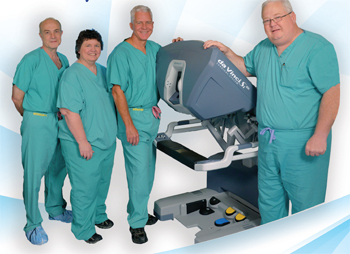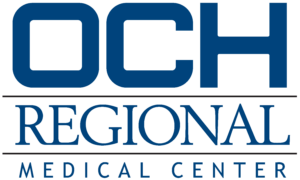 Gone are the days where gynecologic surgery means a long hospital stay and three to six weeks of recovery. At progressive hospitals such as OCH Regional Medical Center, there is a different option for women—robotic-assisted surgery. While traditional open gynecologic surgery requires a large incision for access to the uterus and surrounding anatomy, surgery with the da Vinci robot is minimally invasive with three to four band-aid incisions, an over-night stay in the hospital and has patients back on their feet in one to three weeks.
Gone are the days where gynecologic surgery means a long hospital stay and three to six weeks of recovery. At progressive hospitals such as OCH Regional Medical Center, there is a different option for women—robotic-assisted surgery. While traditional open gynecologic surgery requires a large incision for access to the uterus and surrounding anatomy, surgery with the da Vinci robot is minimally invasive with three to four band-aid incisions, an over-night stay in the hospital and has patients back on their feet in one to three weeks.
Joy Treehunt researched robotic surgery a few years ago for her national boards for teaching. “I thought it was really neat,” she said. “It was hard to imagine that the surgeon could actually manipulate the robot from across the room!” Last year, OCH Staff Obstetrician/Gynecologist Thomas Pearson, MD, recommended Treehunt have a hysterectomy via robotic-assisted surgery. “I was surprised I had the option of robotic surgery in Starkville,” said Treehunt. “Because of my research and the information Dr. Pearson provided, I knew this would be the route I would take.”
The robot consists of three instrument arms which directly contact the patient and one laparoscope arm to view inside the body. The surgeon sits at a separate unit where he or she controls the robotic arms while viewing a three-dimensional, high definition, magnified version of the inside of the body. Surgeons are able to maneuver the robotic arms with 540 degrees of articulation, far greater than the human wrist. Any hand tremor is filtered resulting in precise movements of the instruments. “The surgery is easier with the robot because you’re able to see the anatomy in 3-D which gives you a better evaluation of the surgery area,” said Pearson. Procedures using the da Vinci surgical system result in quicker recovery times, less pain and decreased blood loss. In contrast to conventional surgical methods, which require a large 6-10 inch incision, patients undergoing da Vinci surgeries have several ½ inch (key-hole) incisions through which surgery is performed. “Patients have been extremely pleased with robotic surgery. I have personally been surprised how some ladies have resumed their activities so quickly,” said Pearson.
For Treehunt, having the robotic-assisted surgery one week before Christmas meant that she was able to recover in time to enjoy the holidays with her family. “This just shows that OCH is going the extra mile to keep up with technology and take care of its patients. That’s important, and I’m very well pleased with the outcome,” she said.
Dr. Pearson and fellow OCH Staff OB/GYN Jan Furniss, MD, perform robotic hysterectomies, ovarian surgery and will soon offer surgery for pelvic prolapse repairs. “Robotic surgery provides a better quality of life for our patients,” said Dr. Pearson. “Obviously any procedure that shortens one’s hospital stay and hastens their recovery is not only beneficial from a personal stand point for that individual, but also economically as they return to the workforce more quickly.”
The da Vinci Surgical System has been widely used by both gynecologists and urologists, and Dr. Pearson says he looks forward to it being incorporated into general surgeries one day. “Years ago, I knew that laparoscopic surgery was being done in other places, but I wasn’t sure if I wanted to do it. After seeing our general surgeons doing laparoscopic cholecystectomy (the removal of the gallbladder), I saw what a benefit it would be to our patient population. That’s what moved me into laparoscopic surgery, and I think robotic surgeries will further benefit our patients just as laparoscopic surgery has proven to be advantageous,” said Dr. Pearson. “OCH making the decision to proceed with the purpose of the da Vinci robot system is evident that our hospital is going to continue to offer newer, less-invasive, more patient-friendly services to this community.”
